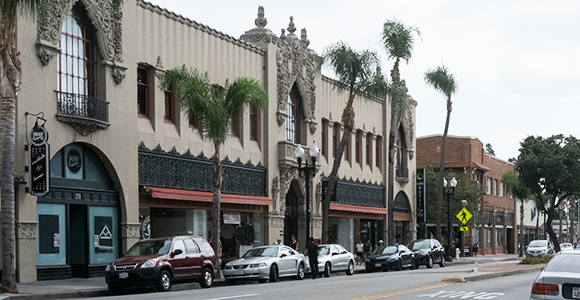
Downtown Santa Ana, California (Photo Credit: Paul Sableman/Flickr)
When the City of Santa Ana opened the waiting list for its Section 8 housing program last year, more than 16,000 families applied, an overwhelming amount for a program that serves 2,700 families. “That story is my indicator of the huge extent of need and the gap of services and shows the need for more affordable housing,” said Judson Brown, Santa Ana’s Housing Division Manager. Santa Ana is Orange County’s second largest city, where more than 20 percent of the population live in poverty.
According to the housing needs report issued in May by the Corporation Housing Partnership Corporation (CHPC), Orange County needs more than 100,000 affordable housing units to meet the needs of its lowest income renters.
“By and large Santa Ana has been one of the areas where the county’s most low income families live,” said Cesar Corvarrubias, executive director of The Kennedy Commission, which partnered with CHPC on the Orange County Report. “About four years ago, they started to work on this ordinance where there was a lot of recognition that a lot of new development was coming in, but it was not addressing the needs of a lot of people who live there today, it was predominantly addressing the needs of high-income folks who wanted to live in Santa Ana, but in more upscale apartments.”
Under the Housing Opportunities Ordinance, new construction must include 15 percent for low-income households or 10 percent for very-low income households. If those units are not built on the site, the developer has the option to pay an in lieu fee, which goes into the Inclusionary Housing Fund for affordable housing.
“That is a rare ordinance in Southern California and in a more conservative region like Orange County. And we took proactive action to try and serve and meet the need of our community by passing an inclusionary housing ordinance for our city,” Brown added.
Santa Ana has also passed an adaptive reuse ordinance, which allows developers to convert unused commercial buildings into housing. The first project being developed under this ordinance is a 1950s commercial building that will be turned into 57 units of affordable housing.
But even with an aggressive affordable housing policy, Santa Ana is unable to match the housing needs of its residents, according to Brown. “When we’ve asked those developers and property managers what their waiting lists are, for those built units, they’re telling us they are four to five times the number of units that they actually have available.”
To help ease the affordable housing crunch, Brown suggests the state assist by increasing the allocations to the Low-Income Housing Tax Credit (LIHTC): “I believe that those are very effective investments that instigate not only economic development in the community, but go to provide much needed affordable housing in the community and they work extremely effective in the private market.”
Increasing the LIHTC (through SB 2817 and AB 873) is one of the proposals included in a letter the California Economic Summit’s Housing Action Team sent to the California Legislature earlier this year. Additionally, Brown would like to see increased the allocations to the Affordable Housing and Sustainable Communities Program (AHSC) and resources for the Emergency Solutions Grant (ESG) Program to combat homelessness.
Until additional sources of funding become available for affordable housing, Brown said “Santa Ana is maximizing our resources with innovative and creative solutions that are responsive to our community’s needs.”

